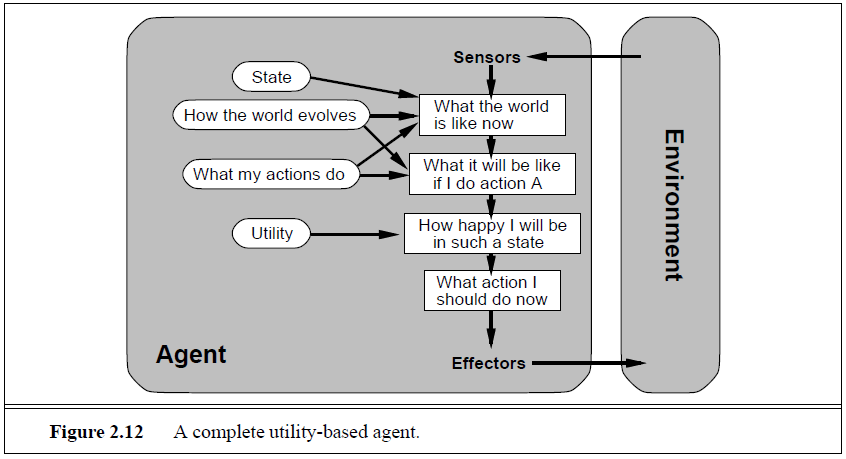Utility-based Agents
Utility-based agents: Goals alone are not really enough to generate high-quality behavior. For example, there are many action sequences that will get the taxi to its destination, thereby achieving the goal, but some are quicker, safer, more reliable, or cheaper than others. Goals just provide a crude distinction between “happy” and “unhappy” states, whereas a more general performance measure should allow a comparison of different world states (or sequences of states) according to exactly how happy they would make the agent if they could be achieved. Because “happy” does not sound very scientific, the customary terminology is to say that if one world state is preferred to another, then it has higher utility for the agent.
Utility is therefore a function that maps a state9 onto a real number, which describes the associated degree of happiness. A complete specification of the utility function allows rational decisions in two kinds of cases where goals have trouble. First, when there are conflicting goals, only some of which can be achieved (for example, speed and safety), the utility function specifies the appropriate trade-off. Second, when there are several goals that the agent can aim for, none of which can be achieved with certainty, utility provides a way in which the likelihood of success can be weighed up against the importance of the goals.
An agent that possesses an explicit utility function therefore can make rational decisions, but may have to compare the utilities achieved by different courses of actions. Goals, although cruder, enable the agent to pick an action right away if it satisfies the goal. In some cases, moreover, a utility function can be translated into a set of goals, such that the decisions made by a goal-based agent using those goals are identical to those made by the utility-based agent. The overall utility-based agent structure appears in Figure 2.12. Actual utility-based agent programs appear in Chapter 5, where we examine game-playing programs that must make fine distinctions among various board positions; where we tackle the general problem of designing decision-making agents.
